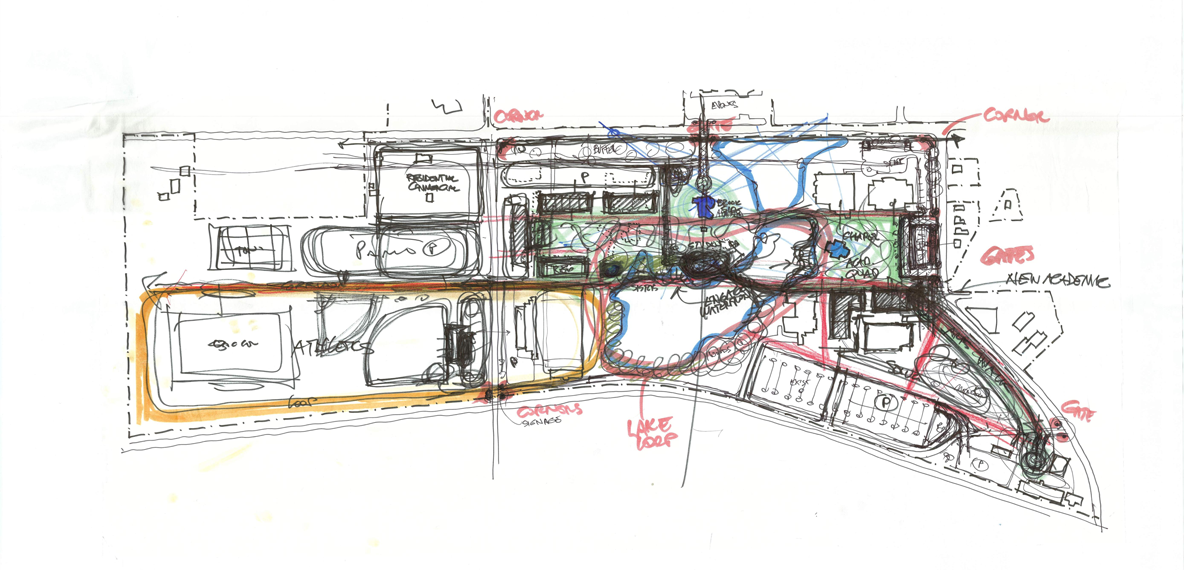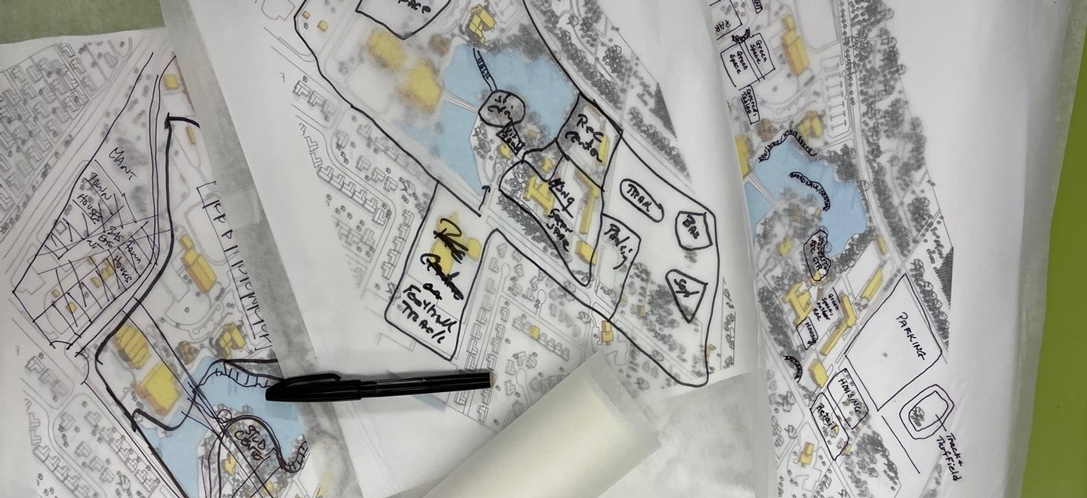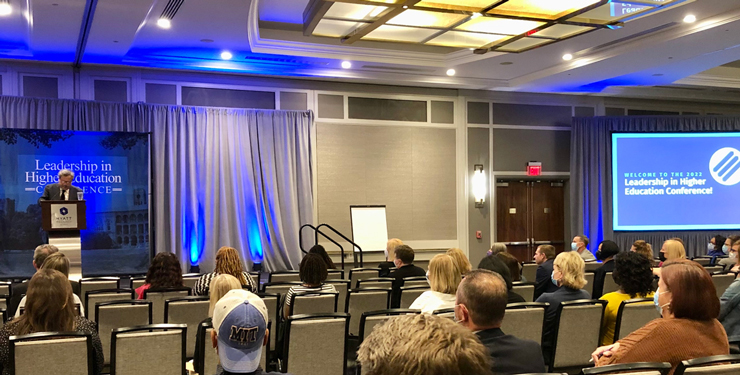
The Need for Visionary, Strategic, and Implementable Campus Planning in Higher Education

BHDP’s collaboration with campus leaders in strategic planning and priority initiatives often involves thoroughly reviewing the most recent campus master plan. These plans, which can be as recent as a few years or as old as a decade, result from a rigorous process that spans nine to twelve months or more. They are crafted with the input of numerous stakeholders, involving extensive deliberation and significant financial investment.
Master plans typically encompass projects for academics, student support, admissions, housing, athletics, administration and faculty office spaces, and general site improvements. These comprehensive documents address various identified needs and wants, ultimately impacting most campus buildings and/or functions. On independent college or university campuses, the total financial projections to implement these plans can reach tens of millions, potentially exceeding one hundred million dollars. This underscores the need for careful planning and resource allocation to ensure the feasibility and sustainability of these projects.
Campus Master Plans—Where They Can Go Wrong
Upon our review of these campus master plans, we can see significant effort was invested in developing them, and it typically appears many campus stakeholders were engaged in the process with their voices heard in the recommendations. However, we often find that these plans, while aspirational and based on stakeholder input, are highly unattainable based on the current financial status of the specific institution (and most of their peers, for that matter). This clearly indicates that the plan is not aligned with the institution’s academic strategic plan, a crucial factor for its success. We also typically see a lost opportunity in these plans of optimizing the space the institution owns, investing in maintaining it, and, at the same time, controlling footprint and operational costs into the future. Whereas certain portions of the master plan may be applicable at a smaller scale, ultimately, we can see the plan is not the correct roadmap to guide the institution through the next decade or more of facility planning.
So, where did things go wrong? Was it the planner, process, lack of healthy conflict, group of stakeholders selected for the committee, or something else? Often, it is a combination of all the above. One of the biggest issues we see is the approach to a campus master plan as the “wish list” that addresses all the needs and desires of the stakeholders engaged in the process and loses sight of what is financially attainable and realistic. In addition, these plans often include new buildings in locations based on “something needing to be there” or a planner’s quest for the ideal quad. When conducting our research on campus master planning, BHDP’s national survey of presidents and chief financial officers indicated only half of respondents believe their master plan aligns with their strategic plan. Equally concerning, only half believe their master plan will be substantially implemented.
The Role of Strategic Partners in Campus Planning
Choosing the right planner for campus planning is crucial. We strongly advise the institution to seek a strategic partner with a wealth of experience working with independent colleges and universities, understanding that their challenges and opportunities are distinct. This partner should understand the intricacies of private higher education and possess the expertise to guide the institution in enhancing the campus experience and, ultimately, their financial performance related to facilities. The final plan should be integrated, underscoring the vital link between the campus’ strategic plan and the physical master plan. Most importantly, the plan must prioritize implementable and affordable solutions, ensuring they are not just theoretical but also practical and beneficial.

BHDP’s Approach to Campus Planning
Master planning can express an aggressive and captivating vision for the institution, but left untethered to existing needs, a strategic plan, or prospective resources, it can lead to an over-built campus. Many institutions have adequate and potentially more space than needed to accommodate their current and projected enrollments. Typically, the challenge is to strategically repurpose space at an affordable cost to allow facilities to support implementing the institution’s strategy. We recommend leaders focus the institution’s limited time and resources on the physical investments that will allow them to implement their strategies within the timeframe needed to make an impact. By aligning and focusing the physical campus “imperatives” on elements of the academic and financial plan that will drive results (attract students, retain students, grow academic programs, increase residential population, create mutually beneficial connections to donors and business partners, etc.), institutions can invest in a more sustainable future through their physical assets. Ultimately, each institution must answer the question, "Are these the right priorities to advance our collective campus community and be sustainable for the future?” and build consensus around the plan. As we heard from multiple presidents participating in one of our leadership roundtables discussing the topic, the master plan must be visionary but practical based on the needs of the institution and the resources available. It must strike the balance between being optimistic and achievable and avoid being delusional.
As a business consultancy and design firm focused on the higher education market, BHDP guides leaders in bridging their institutional strategy and the student experience. By integrating services such as academic program assessment and analysis, economic impact analysis, campus space utilization, and strategic campus planning, our collaborative design process yields implementable strategies to advance the institution. BHDP provides initial consultations with presidents and board trustees in a no-cost partnership with independent colleges and universities throughout the United States.
Let's bring your vision to life. Complete our contact form today to schedule your consultation.
Author
Content Type
Date
April 29, 2024
Market
Topic
Campus Planning



